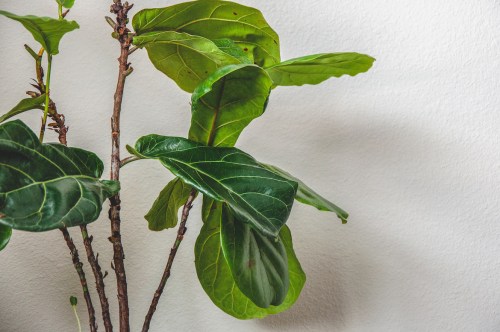Plenty of people brought plants into their homes for the first time in recent months—and no doubt just as many are dealing with withering ferns and cacti. Not to be a bummer! We just don’t all have a green thumb; my actual mother is slow motion murdering her lavender plant, and it’s hard to watch it suffer like this. Everyone talks about how great it is to adopt a hardy indoor plant, how you two will grow together as your sow the benefits of gardening. But nobody talks enough about how to know if a plant is dying—and when it’s okay to let it go.
Experts in This Article
former director of brand marketing at The Sill
It’s ultimately up to you to make a judgement call, and some people aren’t up to the responsibility of saving a dying plant right now. And that’s okay! Whatever you choose, Erin Marino, plant expert and director of marketing at The Sill, shares her advice on how to deal with a plant on the brink of death.
How to know if a plant is dying
Typically, underwatering or overwatering are going to be the two culprits behind plant sickness. With dehydration, first you want to take a long, hard look at your plant. What does it look like? If the leaves are brown, crispy, and in that full almost-autumnal state of decay, we may need to operate.
“For the most part, brown shriveled leaves on your plants won’t bounce back,” Marino says. “It’s best to first cut all that off, the dead and/or dying brown foliage, and then see what you’re truly working with that’s still green.”
After you’ve removed them, you next want to check for wilting leaves and stems. If they seem firm, we can hold out hope that they can perk back up with a thorough, consistent watering. But if they are mushy, then it’s probably for the best that you prune them off as well.
“Cutting back all that dead foliage, and following up with a much needed watering will encourage new growth,” says Marino “It’s not definite that the root system and what stems are left will bounce back, but it’s definitely possible—even if you cut the plant back entirely, leaving only a stub above the potting soil—and worth a shot if it was a beloved plant.”
Let’s say you have the opposite probably and you’ve low-key drowned your fiddle leaf fig. The observation part is more or less the same; you still want to give your plant a full body scan and note any parts that are browning, yellowing, and/or mushy, depending on the plant variety. Once you’ve amputated, place the plant in a spot where it will receive more bright, indirect light, which should help dry out the wet potting mix quicker.
For a more advanced procedure, though, you might want to repot it. The only thing there is there’s a chance that your plant might die on the operating table.
“When repotting it, check the plant’s root system,” says Marino. “If the root system is wet and mushy like the foliage was, your plant might have root rot and it will be hard to help it bounce back. You might want to toss it, or you can try repotting it into the dry soil and waiting two to three weeks for any above the potting mix activity.”
Finally, if you did all the work and nothing survived, don’t be too hard on yourself. For one thing, it’s—you know—a plant. And for another, with every ending comes a new beginning. “Think of this as an opportunity to test out new plants, as those empty planters will need to be filled,” says Marino.
How to have a funeral for a plant
Whether you went through the labor of resuscitating your flora or flat out want to give up, there’s a few different ways to call it. And the friendliest way to do that is to give your plant a potential new home.
“If the plant is possibly salvageable, I’d recommend leaving the plant you want to dispose of on the stoop or curb,” says Marino. “Of course you can toss it in the garbage, but if you’re able to give it a second life, how great is that? Some people love nursing plants back to life.”
For what it’s worth, there are plenty of local online groups that can advertise curbside freebies. Marino points to an account like StoopingNYC as a way of advertising a plant that needs a more, uh, nurturing home. “If it’s not possibly salvageable and you feel bad throwing it out, finding a local compost bin is a good option,” she says.
Sign Up for Our Daily Newsletter
Get all the latest in wellness, trends, food, fitness, beauty, and more delivered right to your inbox.
Got it, you've been added to our email list.










